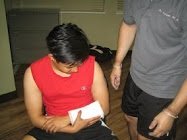Summer is the season that is filled with outside activities. Everybody is out in the sunlight enjoying the scenery. Summer is certainly also the season for accidents and insect bites. Bees attack human beings and other insects when they feel their territory is threatened.
Bees are eventful insects and are very defensive. If you happen to travel around their beehive in their territory or block their way, they will probably sting you. Although bee stings do not require medical assistance but if you are stung by several bees at a time it can be severe. Some individuals are also allergic to bee stings.
Occasionally bee stings can cause extremely severe difficulties such as anaphylaxis which is a severe allergic response. Some individuals might experience a drop in their blood pressure that can cause them to lose consciousness. Individuals who are allergic to bee sting might experience problems breathing, feeling faint, hives, rapid pulse and vomiting.

Six Treatment Tips For Bee Stings
- As with any medical disorder, the finest treatment is avoidance. The most evident way to avoid a bee sting is to understand the territorial nature of bees. Though one bee soaring around your backyard does not generally produce any threat, if you begin seeing more than two bees of the same kind in the same small region, you can be certain that you are close to their hive.
- Bees are automatically attracted by scents and other sugary smells you use can confuse bees and attract them to you.
- An additional prevention step is to shift away from the beehive or moving in the opposite path of the hive. If you are close to the hive, this will cause agitation among the bees.
- If it is a single bee sting and you are able to get rid of the stinger without damaging any venom sacs, you can clean the region with a large amount of cold water and clean it with soap.
- Given that bee stings are also toxic, causing inflammation, it should be treated cautiously. Rinse the stung region with cold water and soap. Cold water can help decrease inflammation and the soap will help prevent a bacterial virus that may occur.
- If you do not discover any severe symptom, you can do some first aids such as placing ice or an antibiotic gel. This will decrease further pain. The ice will also lessen the inflammation and burning sensation and the antibiotic gel will reduce the possibility of a bacterial virus.
Related Video On Bee Stings
http://www.youtube.com/watch?v=XYoQGHORPPs